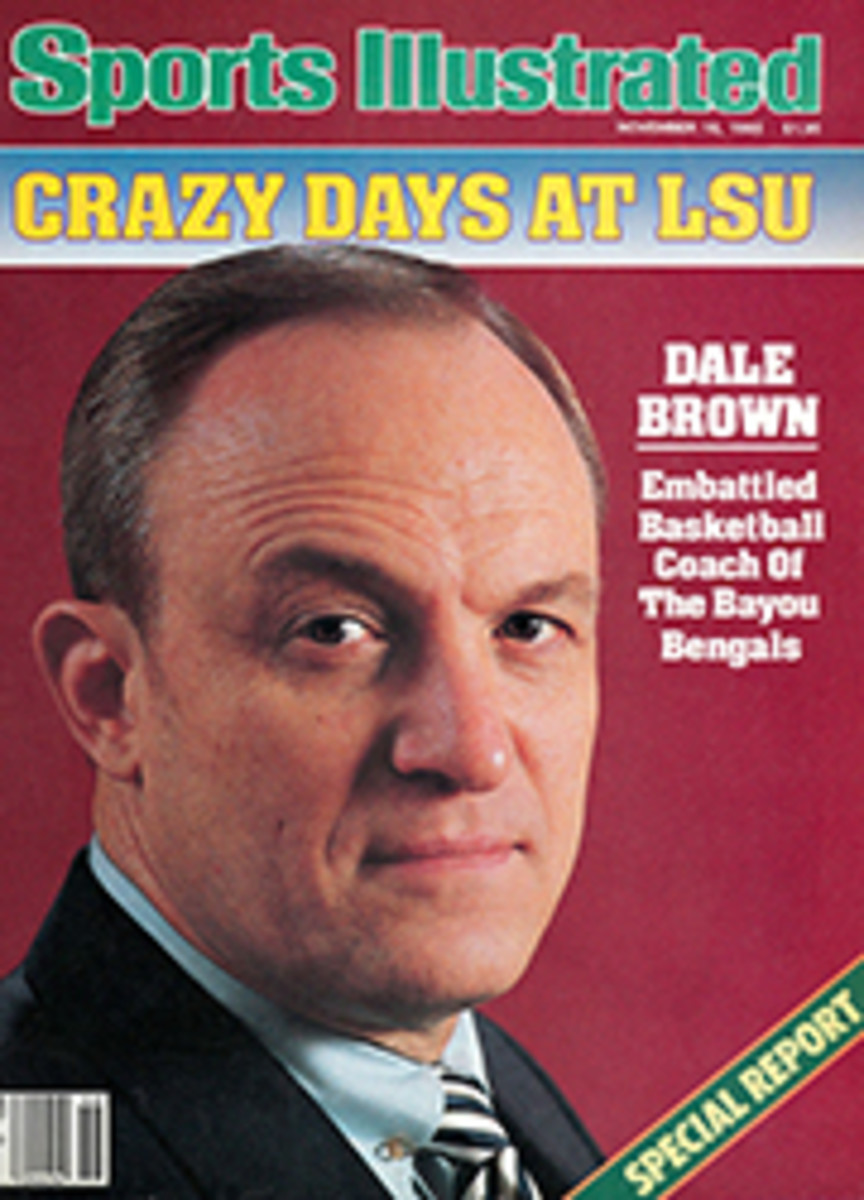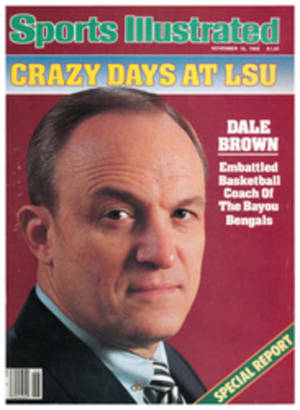
THESE EXEMPLARY AIRCRAFT GAVE NEW MEANING TO THE TERM 'PAPER ROUTE'
On the afternoon of June 9 at Seattle's Kingdome, thousands of people threw paper onto the field from the upper deck. Nothing would stop them.
No harm done, though. The occasion was the eighth annual World Indoor Paper Airplane Championships. Actually, the title is a bit misleading. The WIPAC isn't really global, or even particularly competitive, but just a wacky Seattle tradition dreamed up in 1978 by a local councilman. This year's championships drew 5,000 people (admission was free) to the Kingdome's top level. There competitors folded 11 X 17-inch sheets of printed bond into many varieties of paper-airplane muster, wrote their names on them, took aim at fluorescent circles marked on the artificial turf below and let fly. If a plane landed in a circle, its thrower would win a corresponding prize, perhaps a Ronald McDonald wrist-watch or an all-expenses-paid trip to Walt Disney World. And if a plane flew through the open sunroof of a Volkswagen Golf, its pilot would win the car. (Nobody did.) Since entrants had to make planes from paper sold by tournament sponsors to benefit a local food bank (three sheets for a dollar), each toss also helped a worthy cause.
Meanwhile, eight serious paper-plane buffs—six from Japan, two from the U.S.—were standing quietly down by second base. All had been winners in another event, The Second Great International Paper Airplane Contest, held in the Kingdome in late May. Now they were back in Seattle to receive their medals and submit their craft to an exhibition launch or two before the frenzied WIPAC crowd.
The earlier contest had been on a somewhat higher plane than this event and had been sponsored by Seattle's Museum of Flight, the Smithsonian's National Air and Space Museum, the National Science Foundation, Science 85 magazine, White Wings—a Japanese brand of paper glider—and Japan Air Lines. Responding to ads in The New York Times, wire-service stories and Voice of America shortwave broadcasts, more than 5,000 entrants from 21 countries had built planes and mailed them to the Museum of Flight. Each craft had to be constructed entirely of paper (glue and tape were allowed for bonding) but was not limited by length, weight or design. The contest judges—mostly retired pilots who had both knowledge of aerodynamics and good throwing arms—brought the planes to the Kingdome to toss them during three days of competition. The judges looked for winners in such categories as time aloft, distance traveled, aerobatic ability and appearance in the air.
For a craft to win, it had to be something out of the ordinary. "Since child, hobby," explained one victor, 45-year-old Akio Kobayashi of Tokyo, when a reporter asked him why he liked building and throwing paper bombers. Kobayashi's plane—only 9" nose to tail, 8½" wingtip to wingtip, 2½" high—looked like the sort of glider you'd find in a cereal box, but it was actually an aerodynamic masterpiece. Entered in the professional division of the distance category ("professional" because Kobayashi is an engineer), it flew 122'8"—16 feet farther than its nearest competitor in that category and 2'8" farther than the Wright brothers' plane flew back in 1903.
"My greatest pleasure is to see something I've made fly in the sky," translated an interpreter for Masakatsu Omori of Fukuoka, Japan, a university student whose studies in aerodynamics helped him win the professional esthetics category. Omori's paper plane, only seven inches from edge to edge and eight inches from nose to tail, resembled a M√∂bius strip. Instead of merely flying, it had fluttered—as delicately as a lotus blossom wafting on a breeze—for eight seconds before descending, to the judges' aaahs and applause.
What did all this paper-airplane business add up to? If nothing else, it brought a number of the pastime's many enthusiasts out of the woodwork. Says the Museum of flight's Ali Fujino, "Throughout history, there's been little said about paper planes. The Chinese had a related interest in kites, of course. And Leonardo da Vinci wrote about paper flight, but he didn't make any drawings of paper aircraft." In fact, adds Fujino, the only book on the subject until recently was Paper Planes, a 1939 collection of essays by Englishman H.G.G. Herklots. But the event's success indicates that anyone interested in writing a book on the subject might consider beginning work at once. At last, the field may be crowding.
Still, when Fujino began to organize The Second Great International Airplane Contest as a way of promoting the Museum of Flight's development drive, she wasn't sure there would be much interest. The first contest, sponsored by Scientific American magazine in 1967 at the site of the New York World's Fair that had taken place there two years earlier, attracted 11,000 entries. The next year, though, the competition was discontinued; it had simply been too much work to pull together. "Ever since," Fujino says, "there have been small regional or college contests periodically around the country, but nothing very organized."
But she had forgotten about the Japanese. "I went to Japan on vacation and discovered this hotbed of paper-airplane activity there," Fujino says. "The Japanese actually have little amalgams of fliers called Paper Airplane Sport Clubs. And paper planes are so popular that Dr. Yasuaki Ninonmiya, the sensei [master] of the movement, has written an eight-volume set of books on paper-airplane flight and his designs, called Collection of High Performance Paper Planes. He also has two condominiums in Tokyo, something really rare with living space at so great a premium. One condo is for him, and the other houses his 600 airplanes." Not surprisingly, the number of Japanese entries in The Second Great International Airplane Contest was second only to that of the United States.
What was surprising, though, was how creative or technically ornate many of the planes were. Adam and Jack Hansen of Newcastle, Maine planned theirs with the help of a Macintosh computer. An entry called The Flying Pineapple looked exactly like what its name suggests. There was a "suicide plane," which had taped to it a match and a note reading, "If I don't win, do the honorable thing." (The judges didn't.) Two entries from Mr. G. Pumple of Calgary, Alberta, made out of what he called "British toilet paper," were so light they didn't even register on the contest's scales. James Zongker, an aeronautical engineer for the Boeing Company in Wichita, Kans., worked 75 hours building a detailed model of an F-14 Tomcat from index cards and white bond. A plane shaped like a napkin ring came in from Saudi Arabia. Seattle resident Jeff Brown's Flying Lizard, one of the two largest planes entered in the contest, had a wing-span of three feet, while New Yorker Howard Fink's plane, the smallest, was only an inch long, with a 1½" wingspan. Even Utah Senator Jake Garn got into the act, submitting as an honorary entry the first paper airplane flown in space; Garn had flown it during his Space Shuttle voyage in April.
Because the judging was based on how well the planes flew, almost all the entries were sent with launching instructions. "Throw hard and straight," read one set. "Lunge forward as you throw," read another. "Our favorite," says Fujino, "was a plane from Alaska with 22 pages of handwritten directions. We dubbed them 'The Flight Manual.' " The Japanese wrote detailed information in English right on their planes, followed by a note that said, "If you can read Japanese, read these directions," and then gave even more specific details in Japanese characters. "I suppose that if you spend 175 hours making a paper airplane, like one contestant did, you're allowed a little bit of personal paranoia about some strange judge trashing it," says Fujino.
When it came down to whose planes flew the farthest and longest, it was the construction more than the launching that counted. Most of the Japanese designs were "laminated," or coated with glue, a legal technique that gave the planes more stability as well as added weight. The most successful entries had wings and tail fins modeled after those on real planes. The two winning American designs were even simpler. Sixty-three year-old Robert Meuser's plane looked like a conventional paper dart, and flew 141'4" to win the nonprofessional division of the distance category—the same event he'd won in the first contest 18 years earlier with a different model. "You tweak one wing a hundredth of an inch, or the humidity changes, and an elaborate design can be thrown off," says Meuser, a veteran of model-plane building and a contributor to Model Aviation magazine. "Still, a person shouldn't get too serious about paper airplanes."
Eltin Lucero's plane, winner in the junior (age 14 and under) division of the distance category, proved Meuser's point. Eltin, a sixth-grader from Pueblo, Colo., came up with a perfect design by accident. "He just took an 8½ X 12½ piece of paper and folded it, like most people would," says Fujino. "And the farthest he was able to fly it at home before entering it was 22 feet. But our judges were adults with good arms." So good, in fact, that Eltin's craft flew 114'8".
Two weeks later, that other group of paper-airplane pilots crowded the top level of Seattle's Kingdome, hoping to be as lucky as Eltin. They weren't, though. The year before, Joe Bean, 16, of Renton, Wash, had thrown a plane into a circle marked WALT DISNEY WORLD. But this year he was having his problems. "I guess there's a lot of luck involved," Joe sighed, while folding yet another plane. "I've gotten planes close to the Disney World circle again, but then they keep turning. There's some kind of air current down on the field. Someone should close the doors." Eventually, John Vincent, a 33-year-old Australian who works for Boeing, flew his plane closer to the circle than anyone else and won the Walt Disney World trip.
"The Japanese call paper airplaning a sport," says Fujino, watching the Indoor Paper Airplane festivities. "But for Americans, it involves a different kind of competitive sense than a lot of sports we play. Throwing a paper airplane can be personal and lyrical. It's part fantasy and part escape. In a few minutes' time, it's a way to rise above the humdrum."
ILLUSTRATION
PHILIP ANDERSON
Michael Rozek lives in Spokane, Wash. He has written a number of articles for SI.

